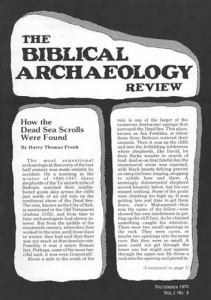Scholars will recall that several years ago a shepherd, wandering in the Gulf of Aquaba, stumbled upon a cave containing several large clay jars and also two tickets to the ice show. Inside the jars were discovered six parchment scrolls with ancient incomprehensible writing which the shepherd, in his ignorance, sold to the museum for $750,000 apiece. Two years later the jars turned up in a pawnshop in Philadelphia. One year later the shepherd turned up in a pawnshop in Philadelphia and neither was claimed.
Archaeologists originally set the date of the scrolls at 4,000 B.C., or just after the massacre of the Israelites by their benefactors. The writing is a mixture of Sumerian, Aramaic, and Babylonian and seems to have been done by either one man over a long period of time, or several men who shared the same suit. The authenticity of the scrolls is currently in great doubt, particularly since the word “Oldsmobile” appears several times in the text, and the few fragments that have finally been translated deal with familiar religious themes in a more than dubious way. Still, excavationist A. H. Bauer has noted that even though the fragments seem totally fraudulent, this is probably the greatest archaeological find in history with the exception of the recovery of his cuff links from a tomb in Jerusalem. The following are the translated fragments.
Already a library member? Log in here.
Institution user? Log in with your IP address.

